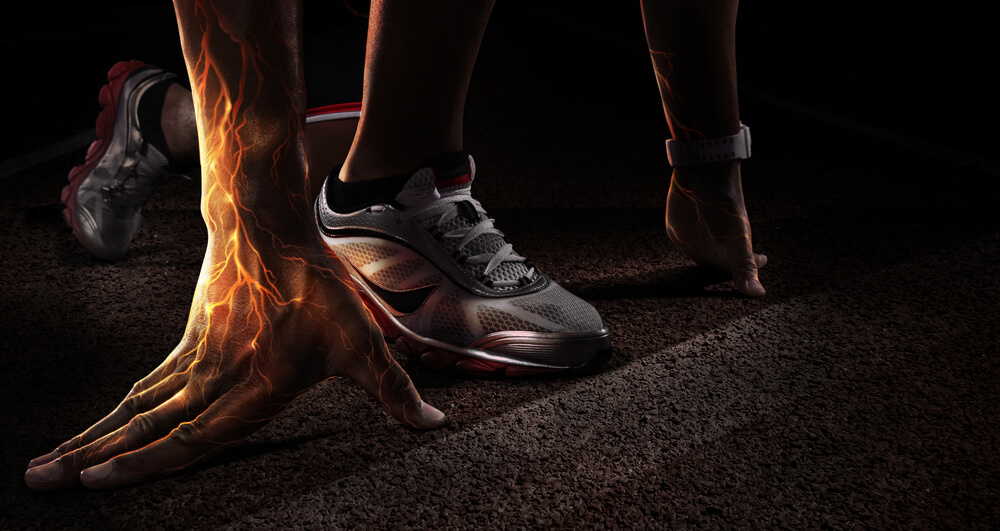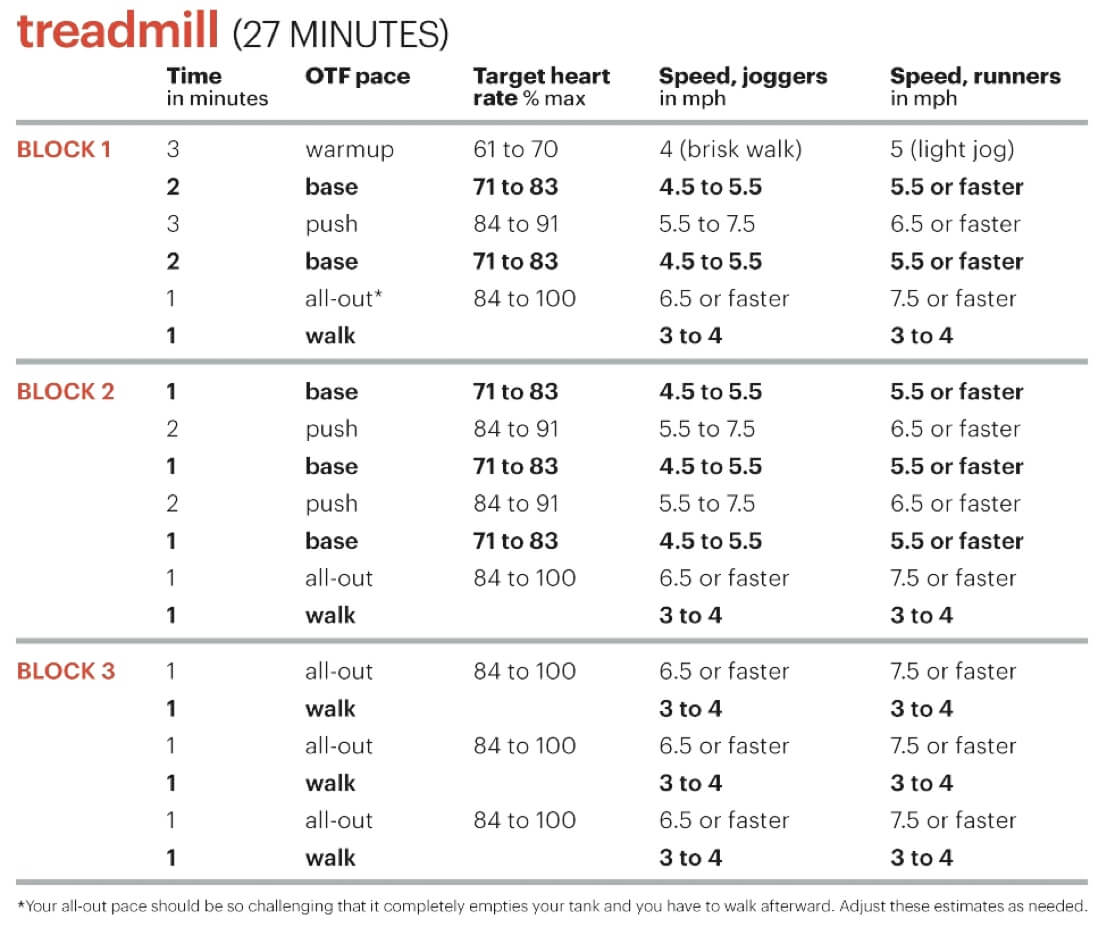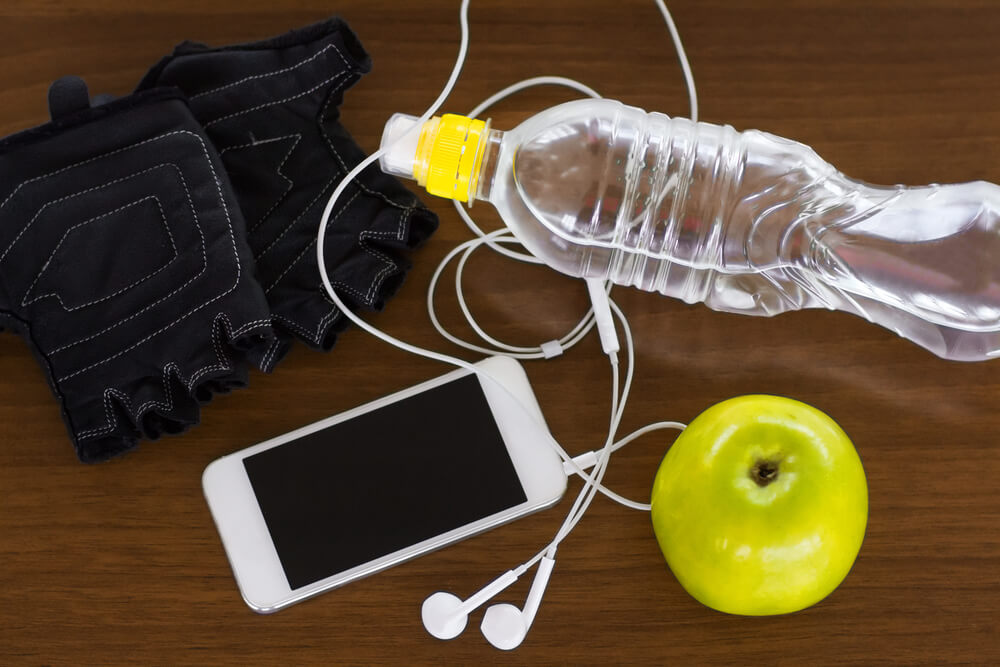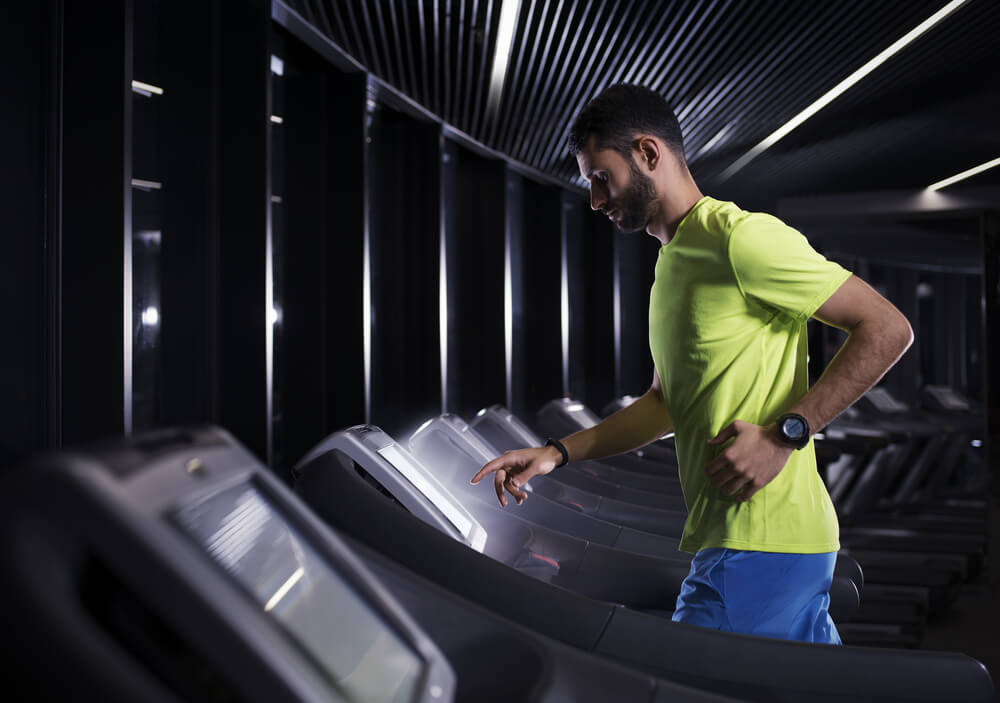
There’s HIIT cardio. It has its perks. Then there’s steady state cardio. It also works. Which one is right for you? It depends on your goals. We help you sort things out.
Cardio is one of the best ways to lose unwanted fat and to stay in shape. That’s a given. There is also no better high than getting that blood flowing and that heart pumping. The way your feet pound the ground is like a ritual. The quickness of your breath is a habit you never want to lose.
In any workout, cardio is key.
According to Duke Medicine, aerobic exercises are better than anaerobic exercises when it comes to burning visceral fat and liver fat, as well as improving insulin (which lowers chances for getting diabetes). Duke Medicine also found that aerobic exercises burned 67% more calories than anaerobic exercises.
According to Harvard Medical, a 30-minute cardio workout burns somewhere around 144 and 294 calories. So it is very easy to see why cardio is so important if you are trying to lose some weight.
The worst kind of fat for your health is the fat around your stomach.
The good news is that cardio does wonders for that unhealthy fat. A study in 2009 reported that aerobic exercise also prevents people from regaining weight in their stomach area. So it makes sense why so many people include cardio into their everyday workout schedule.

HIIT Cardio Vs. Steady State Cardio
But which type of cardio is better for losing weight?
It comes down to high-intensity interval training or HIIT cardio vs. steady state cardio or lower intensity cardio. Well, we are here to tell you everything you need to know about both of these types of cardio.
Low-Intensity Steady Rate (LISS)
A steady state cardio workout is one that makes you perform at 60 to 70% of your body’s maximal capacity for at least 20 minutes. The speed remains constant. Some examples of a low-intensity steady rate cardio workout would be walking, jogging, cycling, elliptical training and swimming.
Steady state cardio workouts have proven to be very beneficial when it comes to fat loss. Having a low-intensity cardio workout between 30 and 90 minutes has proven to produce the best results. Plus, it helps build some great endurance.
Research has shown that running for 45 minutes or more is the best duration to use fat as an energy source. It is also important to note that fat loss occurs hours after your cardio workout ends. However, for those of you who want to maintain muscle mass, maybe keep the cardio under 45 minutes so that your body doesn’t start burning muscle mass and you can stay nice and toned.
Some of the best aspects of opting for a low-intensity cardio workout includes that there is a quicker recovery process, it is good for beginners and it improves your cardiovascular system. However, it can tend to be a bit boring and repetitive so maybe try walking one day and cycling the next day so you don’t get burnt out on just one form of cardio workout.
High-Intensity Interval Training (HIIT)
High-intensity workouts execute a certain exercise at your maximal capacity for a short period time. The times spent is usually just one or two minutes at a rapid pace and then you double that amount of time by working out at a lesser pace. You should repeat this process at least five times. Some examples include a treadmill program, battle rope, burpees, mountain climbers and jumping jacks.
High-intensity cardio workouts allow you to burn a lot of calories in a relatively shorter amount of time.
Why?
You are using a variety of muscle groups. You should find that the end result is you get toned and lean. High-intensity cardio is usually for those are already athletic because it requires a lot of strength and mobility and there may be some physical limitations.
Some pros of the high-intensity cardio workout are that you will build lean muscle mass, you’ll burn more calories and it is shorter in time spent with more variety so your chances of getting bored are much lower.
However, the risk of injury is higher so you’ll need to be more careful. It is also a good idea not to do it every day or it could negatively impact on your muscle growth.

HIIT Workout Plan
Here is an example of a good HIIT workout you can perform on a treadmill:


Are You Trying To Lose Fat Or Weight?
You have to be careful when making a distinction between fat loss and weight loss. Either way, good nutrition is key. Calories tend to have a bad rep when it comes to losing weight. Everyone thinks they need to count calories to achieve their desired weight loss.
All calories come from macronutrients whereas things like vitamins, minerals and sodium are all micronutrients that don’t contain calories. Each macronutrient has a specific number of calories. One gram of protein has 4 calories, one gram of fat has 9 calories, one gram of carbohydrate has 4 calories and one gram of alcohol has 7 calories. Your body needs proteins, carbs, and fats to function.
Carbs fuel your body.
They give you fiber and lots and lots of energy. Carbs are broken down into two different types: Simple carbohydrates and complex carbohydrates. They are classified based on how quickly they break down and the sugar is absorbed.
The glycemic index measures that breakdown and absorption time where 100 means that it is absorbed almost right away. This causes your blood sugar to spike. A low glycemic index rating is 0 to 55 (apples, black beans, whole wheat). A medium glycemic index rating is between 56 and 69. This includes such things as corn, sweet potatoes, and apricots. A high glycemic index rating is 70 or more and it includes stuff like white bread and white rice.
Simple carbs tend to rate higher on the glycemic index where they are broken down and absorbed quickly.
Basically, foods that are considered sugary and processed tend to be higher in simple carbs. On the other hand, complex carbs have higher amounts of fiber, protein, vitamins and minerals. They take more time to break down and absorb because their chemical structure is harder to wear down. Complex carbs can be found in foods such as oats, broccoli, quinoa, brown rice and whole-wheat bread and pasta.
Don’t Forget Your Proteins And Fats
Proteins help build and repair bones, skin, cartilage and blood. If you don’t give your body the protein that it needs, then you won’t be able to sufficiently build up your muscle.
A study done in 2008 and published in the American Journal of Clinical Nutrition concluded that people who eat higher-protein diets burn more calories throughout the day than those who followed lower-protein diets. It also reported that those on higher-protein diets retained lean muscle mass as they lost weight.
You should try and aim for 1 gram of protein per pound of bodyweight if you are trying to build muscle. Try to consume foods that have between 30 to 40 grams of protein after a tough workout to repair those muscles. Don’t forget: Proteins take more energy and time to digest them. They make you feel full longer and you will burn calories in the process. Foods like fish, meat, beans, nuts and eggs are all high in protein and amino acids.
Fat is something that tends to scare people. But they shouldn’t!
Why?
There are good fats and bad fats. The bad fats are trans fat and saturated fats. Saturated fats are butter, high-fat cheese, and some meat products that include lamb, beef, and pork. Trans fats are usually in fried and packaged foods like baked goods and margarine.
So which ones are the good fats?
Good fats are the unsaturated fats. These are essential for improving joint and bone health, lowering blood pressure, protecting against memory loss and lowering your cholesterol. Monounsaturated fats replace the bad fats and are present in olive oil, peanut butter, and avocados. Polyunsaturated fats do wonders for heart health and they are found in foods like corn oil, walnuts, tuna, and salmon. Opt for egg whites, skimmed milk and low-fat cheeses.
These micronutrients are very important for your body’s health. Eating fruits and veggies are so much better for your body than eating that frozen dinner.
Why?
Processed foods like frozen dinners go through lots of complex processing steps and they are lacking in all three of these micronutrients.
Calories Could Feed Your Needs
If you are trying to build muscle and bulk up, then you’ll want to increase your caloric intake. Meanwhile, if you’re trying to lose weight, then you’ll want to decrease your caloric intake. Be sure to remember that everyone’s body is different and people lose weight in different ways and on different nutrition plans.
A starting point is to calculate your Basal Metabolic Rate or BMR. The BMR is the number that indicates the minimum amount of calories your body needs to function at rest or when doing nothing. It takes into account things like age, weight, height and sex in order to see how many calories you need a day to simply function in a healthy state. Essentially, it calculates how many calories your body will burn at rest, but it doesn’t factor in things like walking.
So, if you’re trying to lose fat, then you should be trying to shed the fat while keeping the muscle. In effect, that means that your weight doesn’t really matter. This process then all starts with the right nutrition plan and cardio workouts that allow you to only burn fat while not burning muscle.
If you’re trying to lose weight, then you have to be burning a lot more calories than you consume so your body will start using your muscle tissue as a source of energy, which will essentially converts to losing weight. Just be sure to keep in mind what you really want to be losing.
Why?
Simple, because fat and weight are two completely different things that require completely different workouts and nutrition plans.

HIIT Nutrition Plan
Are you trying to build muscle?
Are you looking to get ripped?
Maybe you just want to maintain your weight. Here is a simple nutrition plan for men that should address any of these concerns.
Building Muscle: Carbs 40% – Protein 40% – Fat 20%
Maintaining Weight: Carbs 35% – Protein 35% – Fat 30%
Getting Ripped: Carbs 30% – Protein 40% – Fat 30%
Here is a simple nutrition plan for women. It doesn’t matter if you’re trying to tone muscle, maintain weight or burn fat. Follow the right path to suit your needs.
Muscle Toning: Carbs 40% – Protein 40% – Fat 20%
Maintain Weight: Carbs 35% – Protein 35% – Fat 30%
Burn Fat: Carbs 30% – Protein 40% – Fat 30%
Conclusion
The benefits of cardio are huge. It helps with all kinds of health problems and can prevent the onset of others. It is easily the best way to lose some of that unwanted fat and is essential to any workout. Both high-intensity interval training (HIIT cardio) and low-intensity steady cardio workouts are great for burning fat, but if you aren’t careful you can burn precious muscle tissue.
Regardless of which cardio workout you prefer, a proper nutrition plan is almost more important. If you are eating processed, unhealthy foods, then you will never achieve your desired results. Be sure to plan out how many calories you want to consume and burn per day and then go on to counting those macros. It is a lot of work to count macros, but the after effects are worth it. There are websites and even apps for your smartphone that can make this process a little easier.
The important thing is to figure out what your goal is and whether HIIT or steady state cardio is your best option. From there, get in the gym, eat right and work toward achieving your goals.
By Sarah Bayard
Latest posts by Sarah Bayard (see all)
- How Much Cardio Should I Do? - Jul 25, 2016
- Eat And Train According To Your Body Type - Jul 1, 2016
- How To Build Muscle Without Fat - Jun 24, 2016










Cardio is one of the best ways to lose unwanted fat and to stay in shape. There is also no better high than getting that blood flowing and that heart pumping. The way your feet pound the ground is like a ritual. The quickness of your breath is a habit you never want to lose.
[…] twitch. This kind of workout actually works better than the high intensity interval training (or HIIT) because you don’t just stop and break for 15 […]
[…] select different lifts and high intensity workouts than what you did on […]
[…] choose totally different lifts and high intensity workouts than what you probably did on […]
[…] select different lifts and high intensity workouts than what you did on […]
[…] Try to switch up your HIIT routines. You can jump rope one day and then use a medicine ball or jog the next day. The point is you need to keep your body guessing. Doing this also helps keep your workouts interesting. We’ve all run into those workout ruts where we grow tired of the same workouts performed each and every day. Thankfully you won’t have to worry about this kind of an issue with HIIT routines. […]
[…] select different lifts and high intensity workouts than what you did on […]
[…] can tell you to perform a specific exercise or to go through a set of high-intensity interval workouts, but not everyone understands form. Someone who doesn’t have the knowledge and experience may end […]
[…] can tell you to perform a specific exercise or to go through a set of high-intensity interval workouts, but not everyone understands form. Someone who doesn’t have the knowledge and experience may end […]
[…] can tell you to perform a specific exercise or to go through a set of high-intensity interval workouts, but not everyone understands form. Someone who doesn’t have the knowledge and experience may end […]
[…] can tell you to perform a specific exercise or to go through a set of high-intensity interval workouts, but not everyone understands form. Someone who doesn’t have the knowledge and experience may end […]
[…] can tell you to perform a specific exercise or to go through a set of high-intensity interval workouts, but not everyone understands form. Someone who doesn’t have the knowledge and experience may end […]
[…] select different lifts and high intensity workouts than what you did on […]
[…] a variety of macronutrients, such as carbohydrates. Metabolic training with low rest periods and a HIIT the final session needs a lot of carbs compared to a long rest neurological workout and few, heavy […]
[…] varying degrees of macronutrients such as carbs. A metabolic workout with low rest periods and a HIIT session at the end requires a lot of carbs compared to a neurological workout with long rest […]